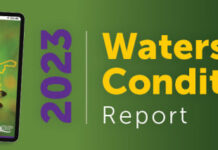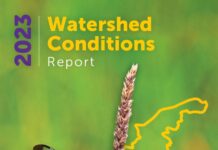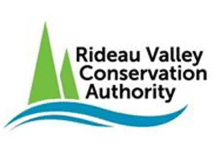The spring melt is just around the corner, and what better way to prepare for it than a new and improved flood data website for waterfront residents?
The Rideau Valley Conservation Authority’s flood forecasting webpage now includes access to several new data sets that will help residents in flood-prone areas of the Rideau Valley watershed and parts of the Ottawa River watershed prepare for flood season.
These updates include:
- Neighbourhood flood mapping for several vulnerable Ottawa communities
- Periodic water level data for some lakes in the Rideau Valley
- Historic Rideau Valley snowpack measurements going back 40 years
- Historic Rideau River water level and stream flow data from as far back as 1933
- New real-time gauges in the vulnerable communities of Cumberland, North Gower, Richmond and Brantwood Park.
The data and maps can be customized, downloaded, printed and shared. The hope is that, armed with historic trends as well as real-time flood forecasting from staff at the RVCA, residents will be better prepared to avoid, limit and manage flood damage in the future.
“Our number one goal is to keep people and property safe, and the best way to do that is with information,” said Brian Stratton, RVCA’s manager of engineering. “The more knowledge residents have about the potential for floods in their neighbourhoods, the better.”
Homeowners in other vulnerable communities within the City of Ottawa can also access new neighbourhood flood mapping that shows where and how floodwaters could breach their communities during 2-, 5-, 10-, 20-, 50- and 100-year floods. These maps will help residents decide how to best protect their properties when the waters rise, whether by sandbagging in the best spot or moving important items to higher ground.
The historical data covering snowpack measurements, lake water levels and Rideau River water levels are also important resources – not just for flood forecasting, but also for spotting weather trends, monitoring local climate change impacts and informing future hazard mapping, municipal planning and zoning decisions.
All of these tools can be found at www.rvca.ca/watershed-conditions.
Should flooding occur, the first response is up to property owners. Make sure you have emergency contact information for your municipality on hand, and create an emergency plan to minimize flood-related property damages and to keep people safe. If you don’t have a plan, now’s the time to make one – there are plenty of excellent resources online, including on the RVCA website. You can also refer to RVCA’s 2021 Flood Contingency Plan for detailed flood response information.
The first step for flood preparation is staying informed about the watershed’s current conditions. To receive notifications about flood risks and warnings, subscribe to our Flood Forecasting and Warning newsletter at www.rvca.ca/about-us/join-our-mailing-lists.








